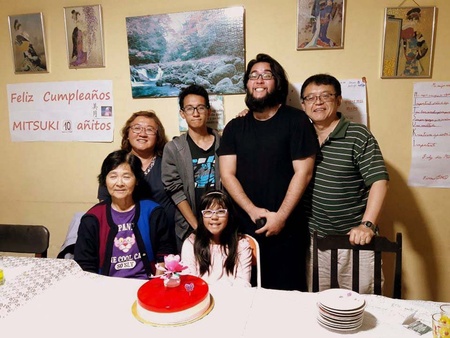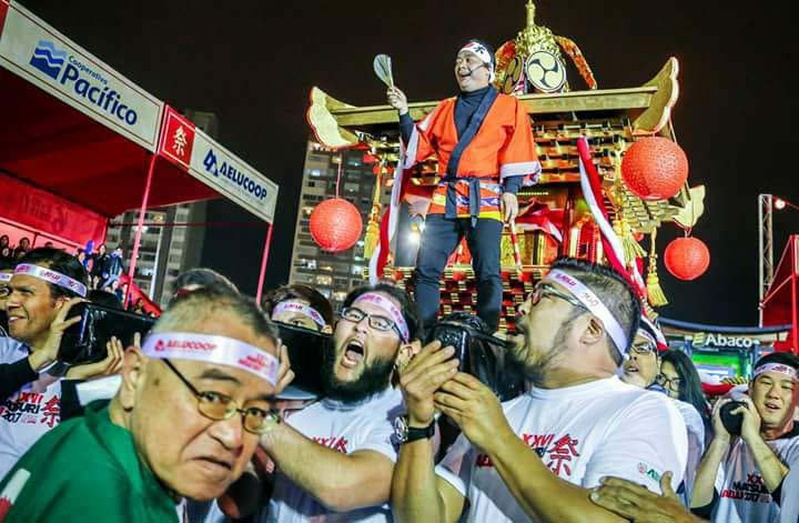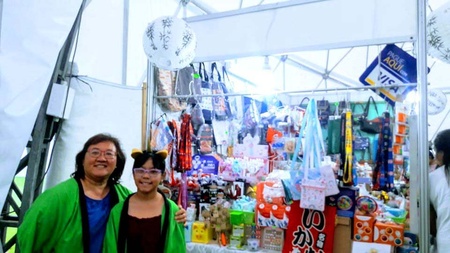Although it has a short name, it has a lot to tell. Mary Higa sums up her life with this phrase: “I always look forward.” 5 years ago, with a lot of effort, he opened his gift shop in the Lima district of San Miguel. Currently, Mary participates in all events of the Nikkei community, offering new products as well as items from Japan. Due to his spontaneous and always attentive nature, he has gained the public's preference. Behind the counter, Mary tells us how she got started.
«I was practically born in the winery»
Mary's parents had a winery in Rímac, where Mary spent her entire childhood and adolescence. While her mother attended, she slept in the milk crate that was under the counter. Mary remembers that it was the time when there was a Nikkei business on every block and everyone agreed on the prices. «Why fight? There is something for everyone," they said. There wasn't the competition that there is now. Mary went to university to study Accounting. His first job was in the Murakami family perfumery in Magdalena and later, in the Higa pharmacy. From that moment, Mary realized that she liked serving the public and not sitting in an office.
«Being a dekasegi , I was attracted to deepatos »
It was a difficult time, where the economic crisis squeezed Peruvian homes. But as a relief, it was also the time of the “ dekasegi boom,” where many Nikkei traveled to Japan to work. Mary was halfway through her degree when she left college. He traveled to Japan as a dekasegi and whenever he saw the deepatos (department stores), he dreamed of having a similar business in Peru. After almost 10 years, she returned to Peru with her husband Juan Carlos. They wanted to invest in a business but it didn't work out. Her husband had to return to Japan and Mary stayed in Peru, already having two children.
«I sold jellies: I didn't want to depend on remittances»
Although her husband sent remittances every month, Mary did not like being dependent and wanted to do something to help herself financially. His children were 4 and 8 years old when he decided to sell gelatin. He had learned to make 3D jellies and went out with his hostess to sell them in his neighborhood. From door to door, his neighbors, Nikkei and Peruvians, bought all the jellies. "I was so happy!" says Mary. But there was someone who didn't see it well: "Aren't you ashamed of selling like that, knocking from door to door in the neighborhood?" he said. That comment made her sad, because Mary was doing it for her children. But it was a friend who encouraged her to keep going. So Mary not only sold 3D jellies, but also catalog makeup, clothing, crafts, and learned how to make chocolates and even wedding cakes. Even carrying her children in a stroller, Mary went out to sell.
"My husband came back for the boys"
While her husband was in Japan, Mary was mom and dad to her children. Her husband had to leave the youngest of their children when she was barely 1 month old, returning to Peru when she was 5 years old. In total, there were 10 years of comings and goings between Peru and Japan, where her husband missed the best moments: the first tooth or the children's first day of nesting. But there came a time when the children needed their father and they took a risk: her husband returned to Peru and they opened a store.
«Daisuki Mensore, bears the initials of my children»
They chose the bazaar business because Mary liked it and also because she had experience serving the public. The name of the store was born from the initials of his 3 children: Diego Minoru, Daniel Masaru and Demi Mitsuki. What better omamori (amulet) than to name your children! So it was that her husband proposed "Daisuki Mensore", combining the Japanese " daisuki " (I love it) with the uchinaaguchi or Okinawan language " mensore " (welcome), due to its Okinawan roots. In itself, it was a family effort: her husband gave the name, her eldest son designed the store's logo, and Mary's brother was the one who included the sanshin (Okinawa string instrument) in the logo.

«The support started with my mother»
Mary says that her husband comes to help her at the store after leaving work. Her children are the ones who update her on what's in fashion and suggest merchandise that could be sold in the store. Some family and friends also show their support, especially during difficult times. "That's where I feel the kimochi " (honey). From her mother, Mary feels very grateful, because she receives enormous support. When Mary's husband was away, her mother has always been with her. Even until now, Mary's mother stays at home taking care of the grandchildren while Mary works at the store. His mother is already 80 years old, but she looks 50, he says. "He is always looking out for me and wants to come to the store, even if it is standing at the door to give me the lock to close." Until now, he receives support from his mother.
"I bring work home"
Mary barely has time to rest. He goes to bed at 2 in the morning and gets up at 6. He has even worked on holidays and Christmas. "I think my time is divided into 80% for the store and 20% for the house," he says. Her children are the ones who ask her to spend more time with them, but as Mary's father said: "When you have a business: if you don't work, you don't eat." Although it is a huge sacrifice for everyone, their children understand it deep down. Mary says that when there is an event, her entire family puts on the store's “green uniform.” She had half a dozen green happi (jacket used in festivals or matsuri) made with the store's logo for each of the members of her family, who are 6. According to Mary, "seeing them dressed like this means a great support that makes me very happy.
"People are surprised by what I have now"
Mary had the dream of having her own store and she already fulfilled it. He acknowledges that it has been difficult, but “when they put an obstacle in my way; I don't get discouraged, I keep going," he says. The greatest reward for her is when customers thank her for good service or when they advertise her store by spreading the word. Plus, Mary is doing something she loves: serving the public. Currently, he participates in various events of the Nikkei community in Lima, such as the Okinawa matsuri in February, the AELU matsuri in November and the Undokai AELU at the end of April. She is even invited to fairs and schools outside the Nikkei community, which makes her very happy, because it means that her store is becoming more and more known. "The Peruvian public is quite fond of Japanese products," says Mary.
At the end of the interview, Mary Higa reveals to us her main secret of her success: “this store was born, more than anything, from ganbatte (effort) and the desire to move forward.”
In addition to the store, Mary manages the store's Facebook page (Daisuki Mensore) , where you can see the products it offers.
* Article adapted for Discover Nikkei and originally published in the Peru Shimpo newspaper on May 1, 2018.
© 2018 Milagros Tsuykayama Shinzato












